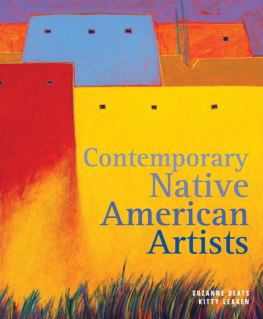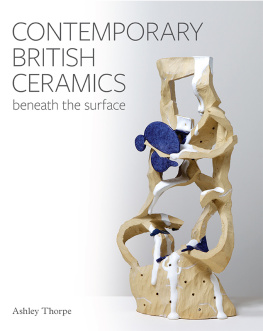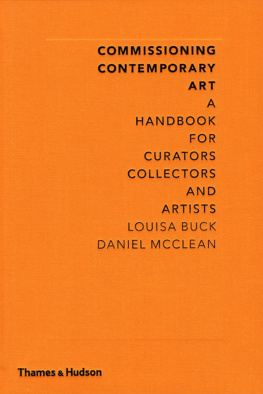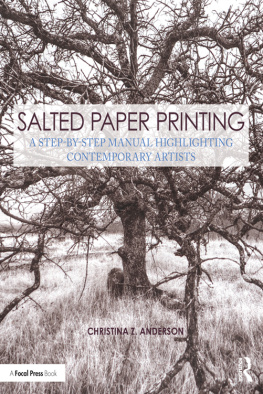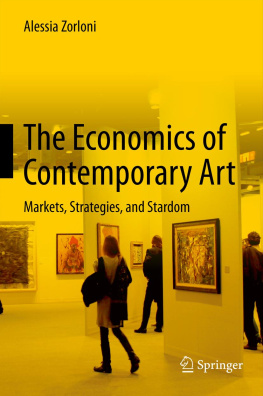

About the Author
Kyung An is an Assistant Curator at the Guggenheim Museum, New York. She has a PhD in art history from the Courtauld Institute of Art, London.
Jessica Cerasi is Exhibitions Manager at Carroll / Fletcher; she was Assistant Curator of the 20th Biennale of Sydney in 2016 and previously Curatorial Assistant at the Hayward Gallery, London.
Other titles of interest published by Thames & Hudson include:
How to Write About Contemporary Art
The Thames & Hudson Dictionary of Art and Artists
The Books that Shaped Art History: From Gombrich and Greenberg to Alpers and Krauss
www.thamesandhudson.com
www.thamesandhudsonusa.com
Contents
THIS BOOK HAS ITS BEGINNINGS in the many awkward conversations we shared with friends and relatives while showing them round our first curatorial endeavours. Even though they were impressed by our first museum jobs, we were met with vacant stares and wry smiles when we tried to explain the stresses of our work, from getting the permits to install a column of human fat in an exhibition (yes, really) to the horror of coming into the gallery and finding the cleaner had thrown one of the artworks in the bin (also true). To friends and family outside the art world, being a curator seemed to boil down to deciding on the cleverest way to hang paintings in a room. They were all baffled, alienated and more than a little amused by it all.
The questions that form this book have come up time and time again, and are those we feel best illustrate peoples frustrations with contemporary art. They are perfectly reasonable questions, but ones that many are still too afraid to ask and that the art world generally fails to address in a way that can be easily understood. Weve narrowed them down to a list of twenty-six, with a chapter for each one. They range from questions about contemporary art to ones concerning the wider art world that surrounds it. Our aim is to introduce new ways of thinking about contemporary art by answering them in a way that is easy to digest the A to Z format, like a map, is there to help navigate this terrain.
Each chapter consists of a text that addresses the question and provides an overview of the topic it introduces, followed by a section that spotlights a particular artwork, event or issue that strikes at the heart of the subject or comes at it from a different perspective. While every chapter is a standalone introduction to one aspect of contemporary art or the art world, they are also all linked in one way or another. Weve sought to draw out those connections by referencing different chapters within the text, in the hope that readers find their own path through the book. After all, the production and interpretation of contemporary art are closely entwined with the art world, its systems and its history. To understand one, you almost always need to know about the other.
Whos Afraid of Contemporary Art brings together all you need to give you the confidence to hold your own in conversation about contemporary artor to go to an exhibition and decide if you like it. If we can talk about topics as complex as the latest technology, an art-house film or the next general election casually with friends, then why does the idea of chatting about contemporary art fill us with so much fear? It is a specialist field like any other, and can lend itself to informal understanding and dinner party conversation in much the same way. We invite you to accompany us on this journey through all that the art world has to offer from A to Z, and hope that by the end youll see that theres nothing to fear, and that contemporary art can be intellectually rewarding and great fun.
We would like to thank our friends and families for their desire to understand the things we are passionate about and also for their sheer cluelessness about where to begin, which inspired us to write this book.
Kyung An and Jessica Cerasi
Whats it all about?
WHAT IS IT THAT COMPELS millions of people every year to visit art museums ? And just why are so many of us drawn to all of this? In short, why do we care about art?
Because art can do things. At its most basic, it can offer a respite from the humdrum routine of everyday life, lifting us out of ourselves by inviting us to experience something out of the ordinary. But at its best, it is incredibly ambitious. It prompts us to think about lifes bigger questions, shows us our preconceptions and challenges assumptions we might never have known we had . And when it works it can be tremendous, appealing to our emotions and tapping into a shared consciousness among people with differing life experiences.
In an era when conflicts can escalate so quickly and political thinking can be so polarized and entrenched, art can offer an opportunity to question, provoke and imagine; it can stimulate debate and encourage conversation with others. It is able to do so precisely because it does not prescribe one point of view, but allows for multiple meanings to emerge .
Like our contemporary world, todays art is not fixed, but always shifting and growing. Contemporary art articulates our present. It offers us an opportunity to process our experience alongside todays artists and make sense of todays world with them . Describing her role as an artist, the photographer Catherine Opie, known for her images of the communities and landscapes of contemporary America, explained: One of the reasons that I have been driven to the idea of creating moments of representation of my time is not only finding myself within that, its also this unbelievable human need.
Like our contemporary world, todays art is not fixed, but always shifting and growing. Contemporary art articulates our present.
It is this ceaseless drive to question and to understand that makes great artists so inspiring and fascinating. For virtually any artist who survives the tests of the art world, making art is a compulsion, a way of making sense. Whether their motivations come from working through personal experiences, or their goals are more outward-looking and political, making art takes courage. At the end of the day, to make an artwork is to put a piece of yourself out into the world, at the risk of judgment, and to proclaim your thoughts as worthy of attention. Making art is about embarking on a course of action without knowing quite where it will end up, without fear of failure or any guarantee of reward. That takes guts. It is these risk-takers to whom we owe all the extraordinary art that inspires us. So as we set out on this journey through the art world, lets not forget the words of legendary art historian E. H. Gombrich: There is no such thing as art. There are only artists.
ALTHOUGH WE THINK OF ART as the creation of an artist, the truth is, it often takes hundreds of people to make art happen. Yes, its the artist who generates the idea, but bringing those ideas to fruition and to an audience involves a whole host of people along the way.
Take the work of Ghanaian artist El Anatsui, for example. Anatsui is well known for his large-scale sculpted metal wall-sculptures, created using thousands of bottle caps sourced from local recycling stations. At his studio in Nsukka, Nigeria, Anatsui works with an extensive team of assistants to fold, crumple, crush and carefully stitch the bottle caps together into intricate and colourfully patterned sculptural hangings.
Next page


